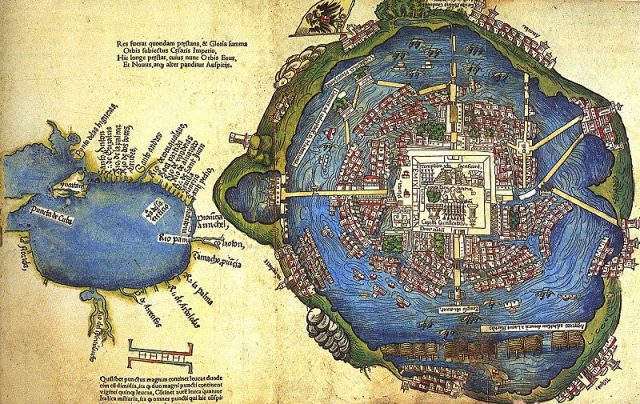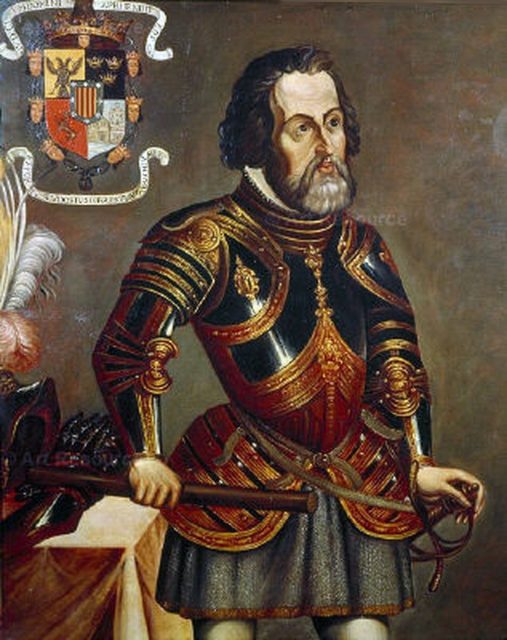During a 1981 construction project in Mexico City, workers quite literally “struck Aztec gold” when they found a surprising treasure 16 feet beneath the surface of a downtown street. A lot of advances have occurred in chemical science in the intervening years, and Mexico’s National Institute of Anthropology and History (NIAH) announced last week that it finally was able to test the gold thoroughly and identify its provenance.
Experts at the NIAH released a statement last week saying that the treasure — a 4.4 pound gold bar — dates back to between 1519 and 1520, which corresponds to the moment when Spaniard conquistador Hernan Cortes had to flee from the city temporarily after a frantic battle that nearly cost him, and his fellow Spaniards, their lives. He returned and conquered the city just one year later.

Beneath Mexico City is almost another world of Aztec treasures, including ruins of the city of Tenochtitlan and its most sacred Aztec temple. Archaeologists have been working on the site for several years, according to online publication Archaeology, which is published by the Archaeological Institute of America.

The gold bar, however, has only just been confirmed as once belonging to Cortes. He and his men had stolen a great deal of gold from the Aztec capital city of Tenochtitlan, in the hopes of melting it down and getting it back to Europe. These chemical tests have finally given experts conclusive evidence of his presence there, and his movements, according to NIAH lead archaeologist Leonardo Lopez Lujan.

He told the online news website the guardian, “The gold bar is a unique historical testimony to a transcendent moment in world history.” He added that, until now, experts could rely only on ancient texts and other documents to learn about and understand the final days of the Aztec empire.

Analysis of the gold bar has given them the concrete link they sought between Cortes and “Sad Night,” or Noche Triste, in Spanish, which is how the Mexican people refer to the night Cortes was driven from the city after plundering it and stealing so many treasures. In just a few short months, on June 30th, Mexico celebrates Noche Triste’s 500th anniversary.
The bar was analyzed with a florescent xray machine, that, Lujan told the guardian, was “able to pinpoint its creation to 1519-20, which coincides with the time Cortes ordered gold objects stolen from an Aztec treasury to be melted down into bars for easier transport to Europe.”
But more than just gold and other artifacts are beneath Mexico City, according to archaeology experts. In 2014, Archaeology explained in an article that beneath modern Mexico City lies a series of ruins, temples and other historically valuable sites. In 1978, municipal workers inadvertently stumbled upon the sacred High Temple of of the Aztecs, and almost steadily since then archaeological work has continued beneath the city’s surface.
“Today,” the magazine said, “archaeology is going on every day in Mexico City — just off the main square, in alleys, (on) patios and in back lots. One dig is being conducted in the basement of a tattoo parlor…excavation at five sites, in particular, all within a short walk of each other, have begun to crystallize our understanding of daily life, worship, and governance during the height of Aztec rule.”
Related Article: The Amazing Survival Story of the Last Aztec Empress
Then in 1981, the construction crew found the gold bar, and today scientists have confirmed it was part of the Aztec treasures that Cortes hoped to steal away from Mexico for Spain. Work beneath the city has not slowed, and as science advances and helps experts learn more about what they find, more and more secrets of the Aztec empire are coming to light. No doubt this link to Cortes, and his plunder of the city, is just the beginning.
